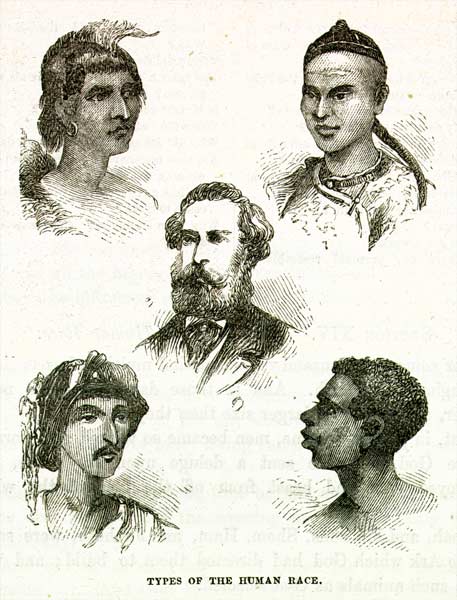
This illustration is drawn from a textbook, Geography for beginners, published in 1864 and intended for use in the schools of the Confederate southern United States. The images represent the five distinct racial types which the author believed distinguished the human race. They were (from top left) the American Indian, the Mongolian, the Caucasian, the East Indian (bottom left) and the Negro. The slave-holding states of the south had special reasons to believe that Negroes were a separate race from Caucasians, but the idea that there were distinct races was widespread in 19th-century western culture. 20th-century genetics has disputed the existence of inherent racial differences.
Te whakamahi i tēnei tūemi
Documenting the American South
Reference:
K. J. Stewart, Geography for beginners. Richmond: J. W. Randolph, 1864
This item has been provided for private study purposes (such as school projects, family and local history research) and any published reproduction (print or electronic) may infringe copyright law. It is the responsibility of the user of any material to obtain clearance from the copyright holder.




Tāpiritia te tākupu hou